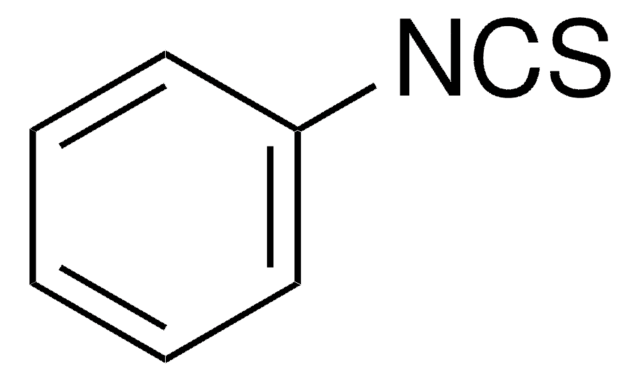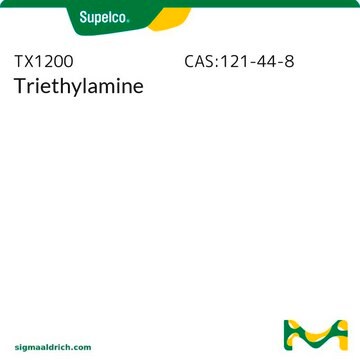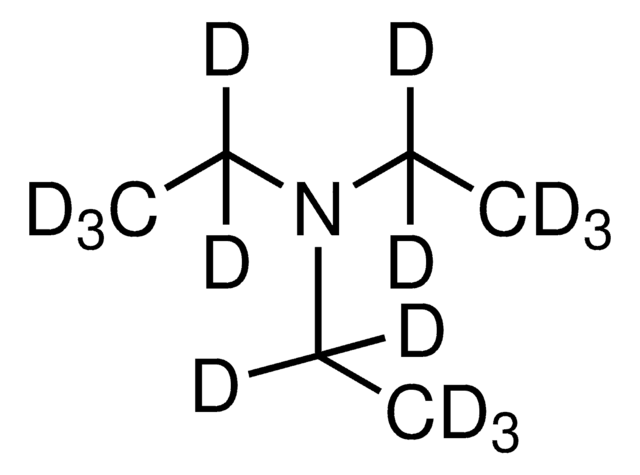90337
Trietilammina
for amino acid analysis, ≥99.5% (GC)
Sinonimo/i:
N,N-dietiletanammina
About This Item
Prodotti consigliati
Grado
for amino acid analysis
Livello qualitativo
Densità del vapore
3.5 (vs air)
Tensione di vapore
51.75 mmHg ( 20 °C)
Saggio
≥99.5% (GC)
Stato
liquid
Temp. autoaccensione
593 °F
Durata
42 mo.
Limite di esplosione
8 %
Impurezze
≤0.1% water
Indice di rifrazione
n20/D 1.401 (lit.)
pH
12.7 (15 °C, 100 g/L)
P. ebollizione
88.8 °C (lit.)
Punto di fusione
−115 °C (lit.)
Densità
0.726 g/mL at 25 °C (lit.)
Stringa SMILE
CCN(CC)CC
InChI
1S/C6H15N/c1-4-7(5-2)6-3/h4-6H2,1-3H3
ZMANZCXQSJIPKH-UHFFFAOYSA-N
Cerchi prodotti simili? Visita Guida al confronto tra prodotti
Applicazioni
- Surface-grafted macromolecular nanowires with pedant fluorescein chromophores by dense non-aggregated nanoarchitectonics as versatile photoactive platforms.: This research demonstrates the use of triethylamine in the synthesis of surface-grafted macromolecular nanowires with fluorescein chromophores, presenting their applications as versatile photoactive platforms in biochemistry and materials science (Kuciel et al., 2024).
Avvertenze
Danger
Indicazioni di pericolo
Classi di pericolo
Acute Tox. 3 Dermal - Acute Tox. 3 Inhalation - Acute Tox. 4 Oral - Eye Dam. 1 - Flam. Liq. 2 - Skin Corr. 1A - STOT SE 3
Organi bersaglio
Respiratory system
Codice della classe di stoccaggio
3 - Flammable liquids
Classe di pericolosità dell'acqua (WGK)
WGK 1
Punto d’infiammabilità (°F)
12.2 °F - closed cup
Punto d’infiammabilità (°C)
-11 °C - closed cup
Dispositivi di protezione individuale
Faceshields, Gloves, Goggles, type ABEK (EN14387) respirator filter
Scegli una delle versioni più recenti:
Possiedi già questo prodotto?
I documenti relativi ai prodotti acquistati recentemente sono disponibili nell’Archivio dei documenti.
I clienti hanno visto anche
Il team dei nostri ricercatori vanta grande esperienza in tutte le aree della ricerca quali Life Science, scienza dei materiali, sintesi chimica, cromatografia, discipline analitiche, ecc..
Contatta l'Assistenza Tecnica.







